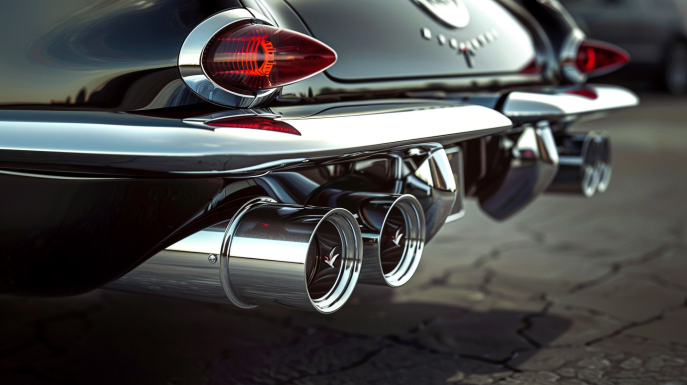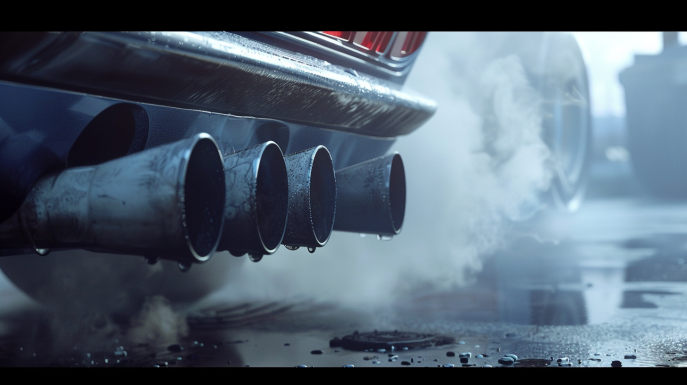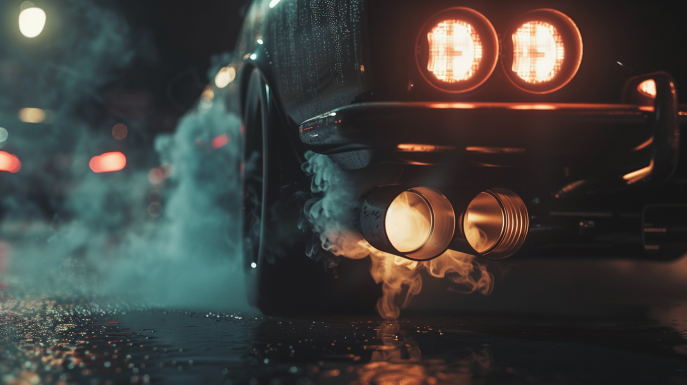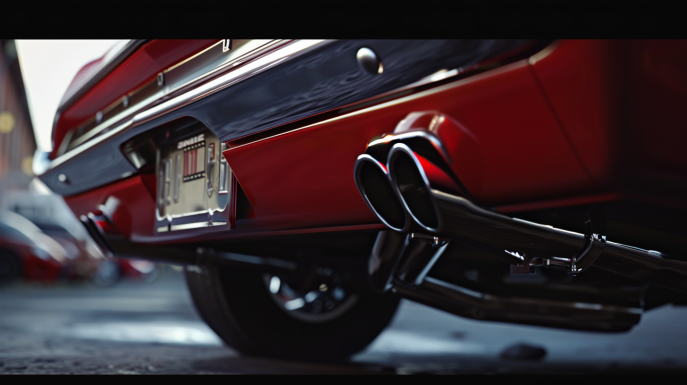As any gearhead knows, the sound of your ride is just as important as its performance. There’s nothing quite like the growl of a souped-up engine or the roar of an aftermarket exhaust. But with so many options out there, how do you choose an exhaust system that gives you the perfect pitch? This is where the Flowmaster loudness chart comes in.
The Flowmaster loudness chart is an indispensable tool for understanding the sound levels of their massive exhaust lineup. As the leading aftermarket exhaust manufacturer since the 1980s, Flowmaster knows a thing or two about volume. Their chart gives decibel ratings for all their current exhaust systems, ranging from the mellow to the mighty. For those looking to upgrade their ride with a more aggressive tone, this chart is the key to picking the right Flowmaster exhaust.
Where to Find the Flowmaster Loudness Chart
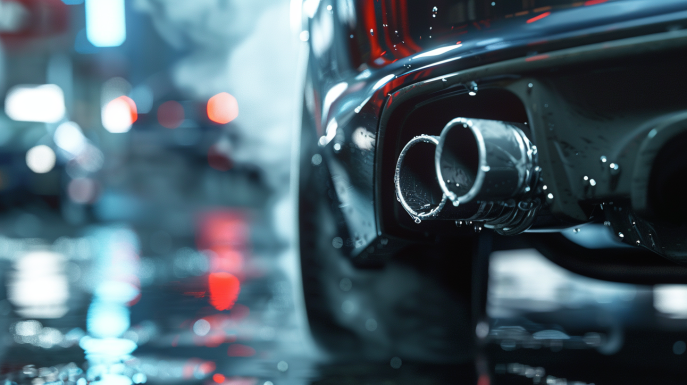
While you may be able to get a print version through some retailers, the most convenient way to access the Flowmaster loudness chart is on their website. The chart can be found under the “Support” section, along with installation guides, product manuals, and other technical documents.
Flowmaster breaks the chart down into sections for each exhaust series, such as the FlowFX, American Thunder, and Force II. Each series has its own ratings for decibel levels at idle, cruise, and wide open throttle. There are also notes indicating the loudest and quietest options within each line.
Whether you drive a classic muscle car, tuned import, or full-size truck, browsing the Flowmaster site will let you zero in on the systems designed for your ride. Their website also features sound clips so you can get a taste of the different exhaust tones.
Ranking the Loudest Flowmaster Series
One major advantage of the Flowmaster loudness chart is being able to compare sound levels across their entire product catalog. This makes it easy to identify the loudest options if maximum volume is your goal. Based on the max decibel ratings, here is how the Flowmaster series stack up from loud to loudest:
- FlowFX
- Delta Force
- American Thunder
- Outlaw
- Force II
- 40 Series
- Super 44
- Super 40
- Super 10
The Super 10 reigns supreme when it comes to raw loudness, with a brain-rattling rating of 95 decibels at wide open throttle. The Super 40 and Super 44 series also deliver an aggressive tone, thanks to their chambered mufflers and minimal baffling. Further down the list, the FlowFX offers a more refined rumble in the 80 decibel range.
Keep in mind that the loudest exhaust may not always be the best choice. Sound levels need to be matched to your specific vehicle, its engine size, and the impression you want to make. The Flowmaster chart is just a starting point to gauge the differences between each series.
Rating the Noise of Flowmaster Exhausts

In addition to organizing the exhaust systems from least to most loud, the Flowmaster chart uses decibel levels to give an accurate reading of their noise output. Decibels are the standard unit used to measure the intensity and pressure of sound.
The decibel (dB) ratings on the chart represent the loudness detected from the exhaust outlet at three different engine speeds:
- Idle (in neutral)
- Cruise (steady 1500 RPM)
- Wide open throttle (max RPM)
By measuring volume at both low and high speeds, this scale gives a realistic impression of how the exhaust will sound in day-to-day driving. The “loudness” column simplifies the range into qualitative ratings from 1-10.
This approach makes the Flowmaster loudness chart more useful and accurate than seeing only a single max decibel number. You can better visualize how the tone and aggression will change with RPMs. It also shows which series are designed for a more civil street sound.
Comparing the Flowmaster Super 10 and Super 44
The Super 10 and Super 44 represent two iconic Flowmaster exhausts known for commanding attention. As their names suggest, the main difference lies in the muffler size – 2.5″ for the Super 10 and 2.25″ for the Super 44. How does this impact the sound?
According to the chart, the Super 10 clocks in at a face-melting 95 decibels at full throttle. The Super 44 isn’t far behind at 93 dB, but lacks the same glass-rattling intensity. At idle and cruise, the Super 44 also has a 2-4 dB edge in the volume department.
So while both deliver a seriously loud exhaust note, the Super 10 takes the cake in terms of raw, unbridled noise. The enlarged mufflers and reduced baffles unleash more volume at high RPMs. The Super 44 offers a more restrained rumble during relaxed driving. This makes the Super 44 a smart choice if you want bold sound with some street manners.
Finding the Right Flowmaster Loudness for Your Ride
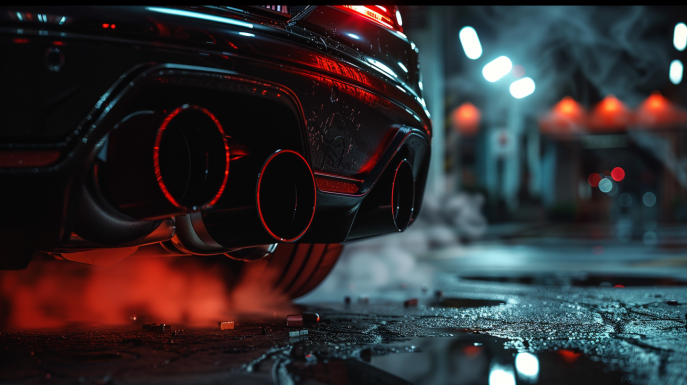
One of the big perks of Flowmaster’s diverse product lineup is the ability to fine tune the sound for any vehicle. Their catalog runs the gamut from mild to wild. Whether you want an understated growl or earth-shaking decibels, the loudness chart makes it easy to pick the perfect exhaust note.
Daily drivers will appreciate options like the FlowFX or Delta Force that maintain a mellow tone under 2500 RPMs. These give you a performance boost without droning or drawing unwanted attention. For street machines looking to turn heads, the American Thunder and Force II strike a great balance of loudness across the rev range.
If you’re building a race car or drag strip demon, the Super 10 and Super 44 deliver maximum noise for high-speed runs. And vintage hot rods can run wild with the Outlaw series – the undisputed king of old school muscle car sound. The chart paints a clear picture to match loudness with your specific build.
Is There a Street Legal Flowmaster Exhaust That’s Still Loud?
For many enthusiasts, a common challenge is finding an aftermarket system that pushes the limits of loudness while still passing legal restrictions. Excessive noise is among the top reasons for vehicles to fail inspection and registration.
Luckily, several options in the Flowmaster catalog allow you to get rowdy but stay street legal. Top choices include the Force II and American Thunder series, both sporting aggressive tones that hover around 90 decibels at redline. Despite their volume, the precise chamber design prevents exhaust drones that exceed local noise ordinances.
The key is sticking to systems rated for a maximum of 95 decibels or less. Flowmaster engineers their mufflers to maintain volume as the RPMs climb without going over the line. As long as the rest of your vehicle is inspection-ready, ripping through gears with one of these exhausts will bring the noise while keeping the authorities at bay.
How to Interpret Decibel Levels on the Flowmaster Chart
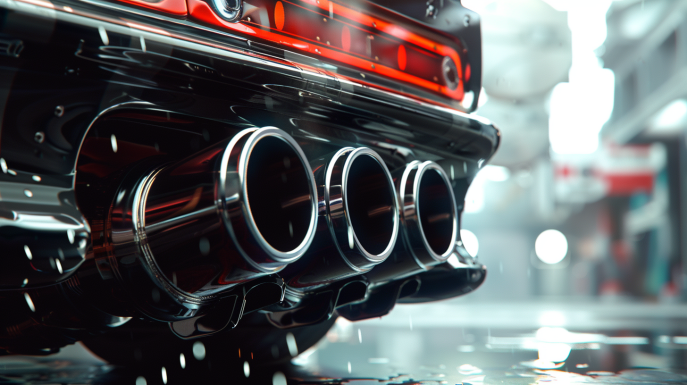
For those unfamiliar with decibel scales, it can be hard to visualize how loud an exhaust will be based on the chart. Here are some key reference points for interpreting the ratings:
- 80 dB or less – Normal speaking voice
- 85 – 95 dB – Motorcycle, lawnmower, shop vac
- 100 dB – Jackhammer, jet flyover
- 115 dB – Sandblasting, rock concert
- 120 dB – Ambulance siren, thunderclap
So a Flowmaster exhaust rated at 85 decibels would be similar in volume to a passing motorcycle. Expect it to be clearly audible but not overpowering at low speeds. Approaching 100 decibels at wide open throttle means grabbing attention whenever you punch the gas. Make sure to protect your hearing around the 115+ dB range, which can cause damage with prolonged exposure.
The chart gives a sliding scale, so seeing a 5 dB jump from idle to redline means the exhaust tone will get dramatically louder as engine speed increases. Use these real-world comparisons to gauge how aggressive the exhaust will sound revving through each gear.
Picking the Right Flowmaster for Daily Driving
For many enthusiasts, the holy grail is finding an aftermarket exhaust with a perfect balance of sound – throaty and muscular when you step on it, but smooth and subdued around town. Based on its loudness ratings, which Flowmaster series consistently hits this sweet spot?
The chart shows the Delta Force line as an ideal solution for balancing daily drivability with a bold exhaust tone. At idle and 1500 RPM cruise, it maintains a moderate 75-80 dB output akin to passing traffic. But go full throttle and it ramps up to a healthy 90+ decibel roar.
Other contenders include the American Thunder, which shares a similar tone, along with the Force II on the louder end of the spectrum. Either option provides a mellow rumble during routine driving, saving the ferocious vocalization for when you want to show off. If you need a civil street sound but crave head-turning volume at wide open throttle, these Flowmaster systems are made for daily drivers.
Do Flowmaster’s Sound Clips Accurately Represent the Loudness Ratings?
One of the biggest assets alongside the Flowmaster loudness chart are the exhaust sound clips available on their website. These sample videos give you a real-world sense of how each series actually sounds installed on a car. But do the clips realistically reflect the decibel levels shown on the chart?
Based on customer reviews, the consensus is that the sound samples are impressively accurate representations of Flowmaster’s exhaust tone and loudness. Visitors mention the clips matching their expectations after ordering and installing various series. Since audio recordings can never fully recreate the visceral sensation of volume, Flowmaster does an admirable job translating the chart into videos.
However, there are some limitations. The variance in tone based on specific engine size, turbocharging, muffler configuration, etc. means each clip only provides a general idea of loudness. User-submitted videos can depict how an exhaust sounds on your particular make and model. But the main clips directly from Flowmaster offer a precise depiction of ratings like idle rumble and wide open roar. Overall, the chart and clips form a detailed picture of what to expect.
How Engine Size Impacts Flowmaster Loudness Ratings
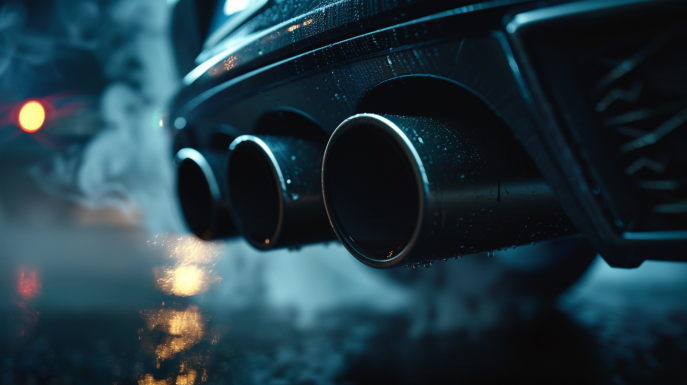
When reading the Flowmaster loudness chart, it’s important to remember the decibel ratings are based on their own demo test vehicles, usually a V8-powered car or truck. How will the exhaust sound and volume vary based on your engine’s size and cylinders?
The general rule of thumb is that larger displacement and more cylinders will increase the loudness versus Flowmaster’s baseline ratings. For example, their Force II test vehicle is likely a 5.0-6.0L V8 producing 90 dB at wide open throttle. The same Force II system installed on a big block V8 or high-revving V10 could easily exceed 95+ decibels.
Conversely, smaller 4-cylinder and 6-cylinder motors will see some reduction in volume from the posted levels. There are exceptions based on turbocharging and other performance upgrades – but in most cases, bigger cylinders equate to bigger noise. Whether upgrading a compact import or performance V12, factor your engine into interpreting the loudness ratings.
From Mild to Wild: Reviewing Flowmaster’s Loudest and Quietest Exhausts
From barely louder than stock to hearing damage-inducing decibels, Flowmaster’s catalog spans the entire spectrum of loudness. Here’s a breakdown of their loudest and quietest offerings based on the chart:
Loudest
- Super 10 – Absolute king of loud, earning its name with 95 dB roar
- Super 40 – Deafening 91 dB, yet street legal when uncorked
- Force II – Sheer brute force and 90+ dB wall of sound
Quietest
- Flow FX – With 80 dB, nearly stock noise levels
- Delta Force – Civilized nature with max 85 dB output
- American Thunder – Restrained rumble under 2500 RPM
No matter your volume preference, Flowmaster sticks to their mission – delivering aggressive tone when you want it without droning and fatigue from excess noise. Whether you need hardcore loud or just a bit more bark, combining the chart with sound samples dials in the perfect exhaust note.
Using the Chart to Select Racing Exhausts
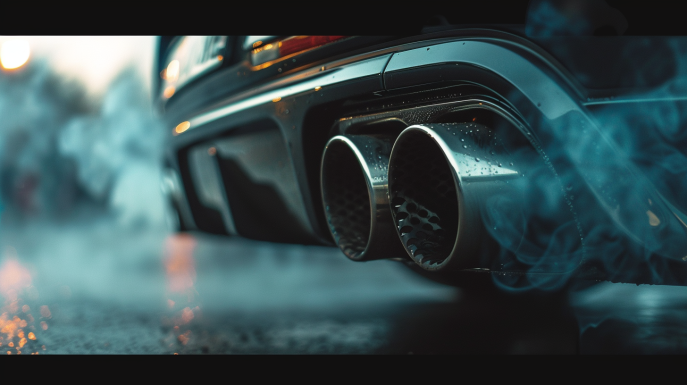
With the Super 10 and other outrageously loud options, Flowmaster caters heavily to the racing crowd. Their chart makes it easy for both drag and road course drivers to pick systems that improve performance and capitalize on unrestricted decibel limits.
Purpose-built drag cars will opt for the Super 10 or Outlaw to shave precious hundredths of a second off their time slips. Without mufflers, these unleash every possible horsepower while proclaiming your presence from the staging lanes.
For road and circle track racing, the Force II offers intense sound with baffles to tune the tone. And the 40 Series provides high flow for reduced backpressure with a mellower 93 dB volume. No matter the racing class, the Flowmaster chart identifies exhausts to enhance both on-track speed and spine-tingling theater.
Mobile Apps and Updated Flowmaster Loudness Ratings
While Flowmaster doesn’t currently offer an official mobile app with their loudness chart, there are third-party apps including dashboards with their exhaust data. For example, Stage3 Motorsports App features Flowmaster’s ratings in their drive-through sound level meter.
However, always double check any third party information against Flowmaster’s own website, as the chart does not appear to receive frequent updates. The printed chart may be revised in new catalogs or sales materials. But their online chart remains largely unchanged since it was first introduced.
Rather than updating the chart, Flowmaster seems to focus on developing new exhaust series and products. Customer feedback suggests the chart remains an accurate gauge of their core exhaust lines. Just be aware the online version may not reflect ratings for the newest releases. Referencing both their main chart and YouTube clips gives the best sense for current and future Flowmaster loudness.
How Vehicle Modifications Can Change Flowmaster’s Sound Ratings
One limitation of any static exhaust loudness chart is that it doesn’t account for other mods that amplify sound. For example, Flowmaster may rate a system at 90 decibels based on a stock V8 truck. Add in performance upgrades like a cold air intake, high-flow headers, or cat-back removal – and that same exhaust could now top 100+ dB.
The chart assumes installation on an otherwise factory stock vehicle. When combined with mods like muffler or resonator deletes, straight pipe sections, and high-flow air intakes, the true loudness can far exceed Flowmaster’s ratings. Their chart is best used as a guideline when planning full exhaust system upgrades. Always factor in how supporting mods can boost both horsepower and volume.
Where to Experience Flowmaster Exhausts Live

While sound clips are invaluable, nothing compares to hearing Flowmaster exhaust tones in person. Beyond test driving installed systems locally, here are some prime spots to experience the Flowmaster loudness chart live:
- Flowmaster factory in Santa Rosa, CA – Demo garage with product soundboards
- Drag strips – National Hot Rod Association events feature half the pits running Flowmaster
- Car shows and rallies – Hear road-tested exhausts on enthusiast vehicles
- Dyno shops – Performance tests let you listen at idle and redline
- ** motorsports dealers** – Many have demo vehicles with Flowmaster exhausts
From factory showrooms to the professionals competing on track, there are plenty of opportunities to audit the chart’s ratings. Flowmaster’s iconic sound has echoed from speedways to the hot rod hay-days for over 30 years. Use the chart as your guide, then head trackside or to a dealership to listen firsthand.
Consulting Flowmaster’s Tech Support on the Loudness Chart
For DIY installers, the Flowmaster loudness chart provides invaluable data to make an informed exhaust choice. But you can always tap into their technical support for personalized recommendations. Reach out to their experts via:
- Phone – Their California headquarters can clarify chart ratings at (707) 544-4761
- Online chat – Available during business hours at https://flowmasterinc.com/
- Email – Send product questions to [email protected]
The benefit of contacting Flowmaster directly is getting advice tailored to your vehicle. Their techs can explain how the chart noise levels might vary based on your specific make, model, and engine. They can also recommend compatible exhaust layouts and tips for installation. Take advantage of their decades of experience to ensure your new exhaust achieves the perfect bold tone.
Whether you’re researching, installing, or modifying a Flowmaster exhaust system – keep their loudness chart on hand as your volume guide. Compare ratings between series to pinpoint the ideal balance of sound. Cruise the middle decibel levels for bold street presence, or crank the dial to 11 with the limb-rattling Super 10. Whatever your speed, Flowmaster’s chart speaks the universal language all auto enthusiasts long to hear – the roar of performance.

